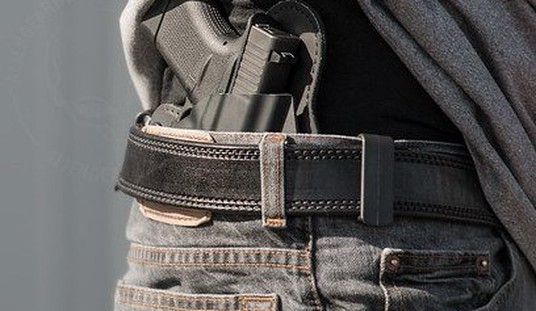A protest of the Dakota Access Pipeline nearly turned deadly early Monday morning when an explosion took place in a standoff between riot police and a large group of environmentalist protestors, causing a too-the-bone arm injury on 21-year-old protestor Sophia Wilansky.
A woman protesting the construction of the Dakota Access Pipeline who was wounded earlier this week might lose her arm as a result of the injury, her family says. Sophia Wilansky’s injury is the most gruesome to date of the months-long standoff at Standing Rock, N.D.
“The doctor just said she may need as many as 20 surgeries over very many months to have any hope of saving her arm and her hand,” Wilansky’s father, Wayne Wilansky, told a group of reporters outside a Minneapolis hospital.
Police and protesters — who call themselves water protectors — have very different explanations for how Sophia Wilansky was injured early Monday morning. Protesters say she was struck by a police weapon; police suggest she might have been involved in an explosion caused by protesters.

There’s no doubt whatsoever that Wilansky was severely injured by some sort of small explosion as she was part of a group of protestors advancing upon police lines.
Law enforcement has openly admitted that been using certain kinds of less-lethal weapon systems to keep the protestors—who have at times been violent—at a distance and off the private property where the pipeline being completed. Monday’s confrontation took place at a bridge near the Standing Rock Indian Reservation as protestors attempted to remove vehicles they’d previously set aflame, in order to get to the police barricade on the far side of the bridge.

As the photo above shows, officers are armed with singe-shot 40mm launchers (center) that shoot foam/sponge baton rounds—think “Nerf on steroids” and you won’t be too far off—as well as 12-gauge shotguns (orange, right of frame) that fire one of several different different crowd control payloads, ranging from bean bags to neoprene (the same foam used in wetsuits) slugs.
Officers were also using a fire hose to stop arson fires set by protestors, and then used the same hoses to douse protestors when they close the distance to within 10-15 yards of police position in an apparent attempt to breach the concertina wire. The launchers and tear gas canisters (devices that operate like a flea bomb, spraying a noxious pressurized mist into the air) were deployed when protesters got close enough to be physical threats.
A camera-equipped drone provided a very good idea of what the scene looked like from an aerial view.
At approximately 3:00 AM Monday morning, 21-year-old protestor Sophia Wilansky was wounded in a small explosion. Coincidentally, a young woman at the same remote place, at the exact same time, was wounded trying to plant bombs (my bold below).
Law enforcement say they are investigating the use of homemade explosives at a Dakota Access Pipeline (DAPL) protest. They have recovered weapons and are investigating whether or not they are related to injuries a female protester suffered.
Law enforcement say around 3:00 a.m. November 21, protester activity had de-escalated near the Backwater Bridge, but they noticed two males and a female using a barricade to hide their activity.
Officials say they gave repeated orders for the three people to come out from behind the barricade and they attempted to force them out with “less than lethal” bean bags and sponge rounds. It was then the officers noticed the protesters approach and roll multiple metallic cylinder objects.
“The subjects were given opportunities to retreat back, but it became obvious that they were tampering with the vehicle or planting a device,” said Highway Patrol Lieutenant Tom Iverson. “Their strange mannerisms led law enforcement to believe they were there for a purpose with a calculated effort to either cause harm or breach the line.”
Lt. Iverson says after the cylinders were rolled, law enforcement witnessed an explosion. Several protesters ran to the area, pulled a female from under the vehicle, and fled the scene.
Law Enforcement received information that protesters were using one-pound propane cylinders as explosives and the North Dakota Bureau of Criminal Investigation with support from Federal Bureau of Alcohol, Tobacco and Firearms recovered three of these propane canisters from the site of the explosion.
Investigators also collected rocks and glass jars consistent with the design of Molotov cocktails that were used as weapons against law enforcement.
It was after the female was pulled away from the site of the explosion that Wilansky was brought back to protest medics, with her allies claiming that a police “concussion grenade” injured her.
Curiously, none of the protestors have been able to provide video, photos, or physical evidence of the police possessing, much less deploying such a device, as officers deployed on site do not use concussion grenades.
Oops.
Officers, however, recovered these from the site of the blast.


Logic suggests that Sophia Wilansky may have been the female authorities saw wounded in the explosion of a propane canister-based improvised explosive device (IED).
If the shrapnel recovered from Sophia Wilansky’s body matches that from the evidence recovered from the scene, then there seems to be sufficient evidence to bring charges of attempted murder and domestic terrorism against her for attempting to use a bomb against law enforcement officers.
Maybe they can find her a prison with a good medical ward.
Update: The Morton County Sheriff has released additional photos of the evidence recovered from the site, including a photo that seems to suggest the possibility of blood and human tissue on one of the recovered propane tanks.

It will be interesting to see what forensics can tell us about this device, and if this indeed human blood and tissue. If it is blood and human tissue, there will be DNA.
Who might that DNA belong to?
Additional Update: According to Wayne Wilansky, Sophia Wilansky’s father, agents with the FBI Joint Terrorism Task Force have confiscated the clothes Sophia Wilansky was wearing.
Wayne reported the attack on his daughter to the FBI and the Justice Department, he said, adding that the Justice Department is investigating. But in his description to Democracy Now!, the FBI appeared to behave as though they were investigating Sophia, rather than her assailants:
Sophia was […] waiting to go to surgery. And they’re basically keeping us prisoner inside her hospital room, waiting for a warrant, which never came. They didn’t tell us what they were there for, for many hours. Eventually, I got to speak to a supervisor and learned that what they were looking for was her clothing. And I did eventually consent. I had taken her clothing back to my hotel room the night before, and I did consent to give them the clothing, eventually, after talking to the supervisors. I have an unwritten agreement, but I put it in writing anyway, that they will give me access to those materials so that I can test them, as well, and that they’ll preserve and not destroy that evidence, because I would want to see it, and I would want to have it forensically tested myself.
One FBI agent was wearing a jacket identifying him as a member of the Joint Terrorism Taskforce, the broadcast observed.
The JTTF would be looking to test Sophia Wilansky’s clothes to determine whether the explosive device that caused her injury came from an IED created by protestors, or if it was from a type of explosive device that both the Morton County Sheriff’s Office and the North Dakota Highway Patrol deny possessing, much less deploying at the site of the protest.







Join the conversation as a VIP Member